Victor Manta, PWO, AIJP
While I was searching for some philatelic information, I found by chance auctions at eBay that offered two of the most exciting stamp issues of my youth. They were the "World Cosmonauts" and "Tokyo Summer Olympics" issues of the Romanian Post (RP) that were issued in 1964, when at the age of 20 I was already a collector with some experience.
Although I no longer collect Romanian stamps, I could not help but launch myself into the bidding "adventure", finally winning both auctions at prices that were quite low.
Below you can see the sets that I won so unexpectedly on that beautiful Sunday morning. After I won them, however, I was beset by memories of those times 50 years ago, which I'd like to share with my readers.
In just one year, the Romanian Post issued four similar sets that were quite different than the ones it had issued (by the way, in huge quantities) before and after. The sets had 8 to 10 stamps, perforated and imperforated (the latter sometimes with different colors), accompanied by one imperforated souvenir sheet, on which 3 or 4 sheets were numbered. I print the list below, taken from the 2013 Michel Catalog, which has the advantage that it specifies the print run of these issues:
1963, 25. Nov. Olympische Winterspiele (Winter O.G. - VM), Innsbruck (1964). Odr. (1010); MiNr. 2195-2202 gez (perforate). L 14, MiNr. 2203-2210 ungez (imperforate). MiNr. 2211 (Block 55). Auflagen (print run): MiNr. 2203-2210 = 100 000 Sätze (sets), Bl. 55 = 100 000 numerierte Blocks (numbered sheets)
1964, 15. Jan. Weltraumfahrt (Space flights). Odr. (1010); MiNr. 2238-2247 gez. L 14. MiNr. 2248-2257 ungez.. MiNr. 2258 (Block 56). Auflagen: MiNr. 2238-2257 = 250 000 Sätze, Bl. 56 = 250 000 numerierte Blocks
1964, 1. Sept. Olympische Sommerspiele, Tokio (Summer O.G.). Odr. (105); MiNr. 2309-2316 gez. 13, MiNr. 2317-2324 ungez. MiNr. 2325 (Block 58) . Auflagen: MiNr. 2309-2316 = 500 000, MiNr. 2317-2324 = 30 000 Sätze, Bl. 58 = 200 000 Blocks
1964, 30. Nov. Rumänische Goldmedaillengewinner bei Olympischen Spielen (Romanian gold medal winners at O.G.). RaTdr. (57); MiNr. 2345-2352 gez. K 13, MiNr. 2353-2360 ungez. Auflagen: MiNr. 2345-2352 = 500 000, MiNr. 2353-2360 = 300 000 Sätze, Bl. 59 = 200 000 numerierte Blocks.
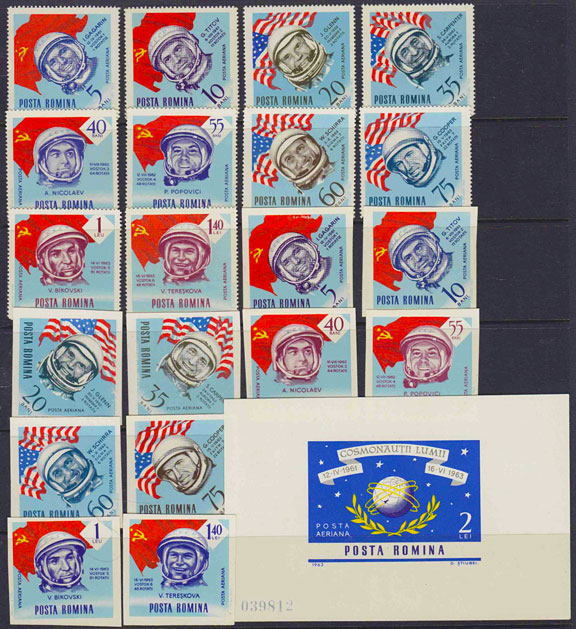
There were several factors that made these sets, with very attractive topics and characterized by special geometric shapes and bold framing, distinguish themselves from other issues of that era, among them:
- An unusually high number of stamps in each set, and the large size of many of stamps and sheets.
- The presence for the first time of American astronauts on Romanian stamps, after many years when the U.S. achievements in the outer space were ignored. The USA flag and the vivid colors of the set dedicated to space conquests were certainly attractive elements for many collectors of the time, and for me among them. Back then I did not notice that the Americans were using the term "astronauts"; for that reason the official name of the set, the “World Cosmonauts", was not quite right.
- The fact that these sets were sold at face value only to subscribers, one set for each. I remember that to get a subscription, the subscribers had to be members of the Romanian Philatelic Association, with dues paid up. I got my membership number around 1962. It was 7019, a number that will give you an idea of the number of subscribers to the Romanian stamp issues back then. By the way, I very rarely saw lines of customers at the philatelic counter stores in Bucharest, as opposed to the long lines I often saw at shops selling scarce and difficult to find basic food (like meat).
- The fact that these sets were also provided by the philatelic services of Romania to people who didn't have a subscription, shortly after issuance, but at the huge price of 120 lei per set. At that time 480 lei for the 4 sets represented about 40 percent of the monthly salary of a first year engineer.
This was a spectacular growth in prices; for example, the Olympic Games in Tokyo set increased from 16.85 lei to 120 lei, 712 percent. But people who bought the sets through the subscription service didn't become rich; there were actually no customers to buy them at this price. The real reason, unannounced as usual, was that the stamp collectors in Romania should not trade them abroad, thus acting as competitors of the Romanian state organization that sold the Romanian new issues worldwide.
Looking more closely at the Michel catalog, some interesting questions arise concerning the print runs and the prices of these issues. For instance, note some huge print runs for the imperforate sets, for example, 250,000 for the space set.
One of the questions might be, how is it possible that the imperforate set of the Olympic Games in Tokyo, with a print run of only 30,000 copies, has about the same catalogue value as the other imperforate sets listed above? Here I would add something I noticed during the period when the series were sold to subscribers: "The ladies from the philately shop", the generic name under which female employees of the philatelic shops in Bucharest were known, had great trouble separating (manually, with scissors) diamond-shaped stamps with sharp corners from the large press sheets in which they were delivered. For this reason there was a lot of waste in their drawers, which would lead to further reduction in the number of those sets.
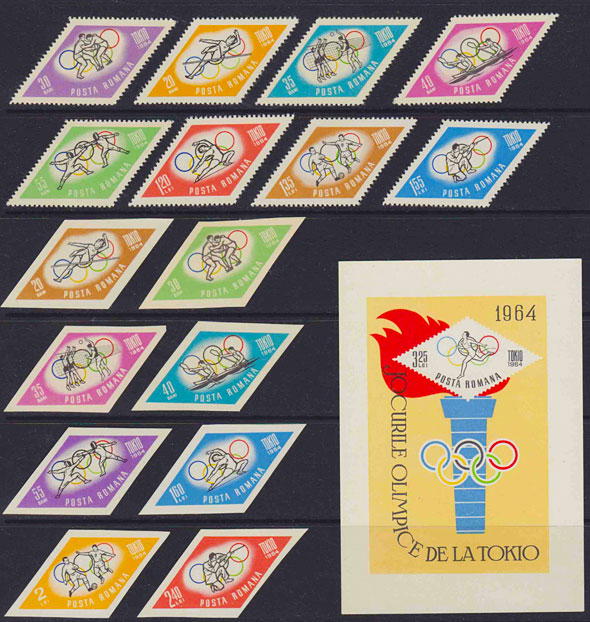
This leads immediately to the question of whether the print run amounts that were publicized by the Romanian Post to its partners and to the philatelic press were real.
We can find an answer by noting relevant details of two souvenir sheets of the "Olympic Medals” set depicted below, both belonging to the collection of the author of this article. The first of the souvenir sheets is postmarked (possibly with a printed postmark, a current practice) with a “glorious ”BUCURESTI CARTARE" one, dated 16.3.965 (16 March 1965), and it has the serial number 092 251. Nothing special can be reported about this souvenir sheet, presented only for comparison purposes. The date in this format can be found on other cancelled to order philatelic material.
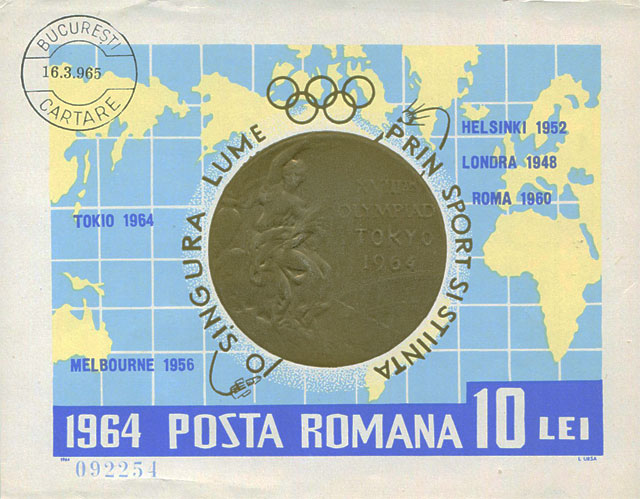
Now let's take a look at the second souvenir sheet with the rather ugly BUCURESTI 1 postmark, bearing the notable date and time 06. 1 69 12, which means that it was cancelled on the January 6th, 1969, more than 4 years after the official issuance of the souvenir sheet.
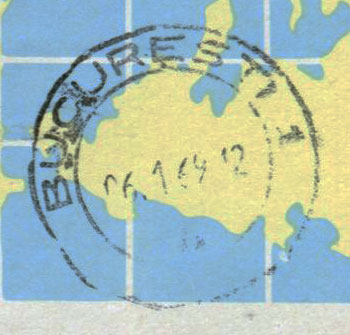
Let us accept this date of the postmark, perhaps applied on a souvenir sheet that remained unsold and that patiently waited for its time to come. But then how can we explain its serial number 209 379, when accordingly to the Michel catalogue the numbering should stop at the value of 199 999?
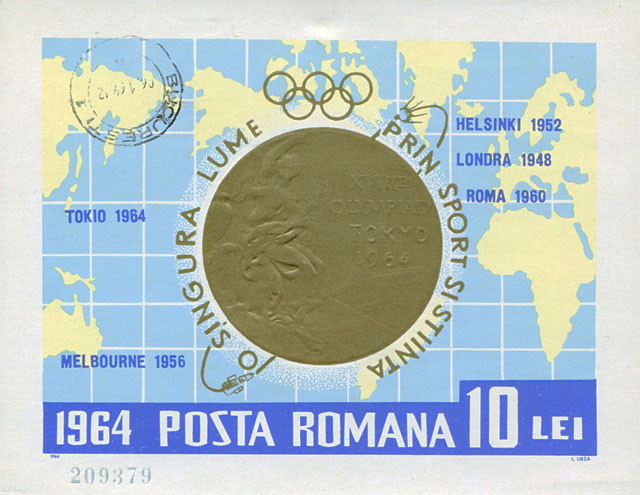
A mistake in the catalogue can not be discounted, but it seems unlikely since that was also the print run of the Tokyo Olympic Games souvenir sheet. It is more likely that the Romanian Post printed and provided the philatelic material by following the requirements of the market, especially from abroad, without troubling itself too much about the print runs that it announced earlier.
This could be the explanation why the lower print runs originally announced by Romanian Post did not necessarily influence the catalogue values, and why generally the demand abroad for most Romanian stamps from the period 1960 - 1989 is currently extremely low.
The fact that many other postal administrations of that time, also hungry for convertible currencies, did the same thing is no consolation and one cannot ignore the material that literally invaded the world philatelic market. It is a legacy of those times that cannot be either eliminated or forgotten.
What happened to the material issued by the Romanian Post after 1989 could lead to another interesting story. I leave the task of picking up the most interesting topical sets to those who have lived and still live during this period. Hopefully some of them will share their memories, with the perspective gained by the passage of another 50 years; which means they can tell us starting by 2039.
Lower Manhattan , New York City , USA , October, 2013
Acknowledgment: Many thanks to Roy Berliner from the USA for having proofread this article.
Note: The version in Romanian of this article appeared in the printed edition of the Romanian journal philatelica.ro, No. 6 (29), November - December 2013